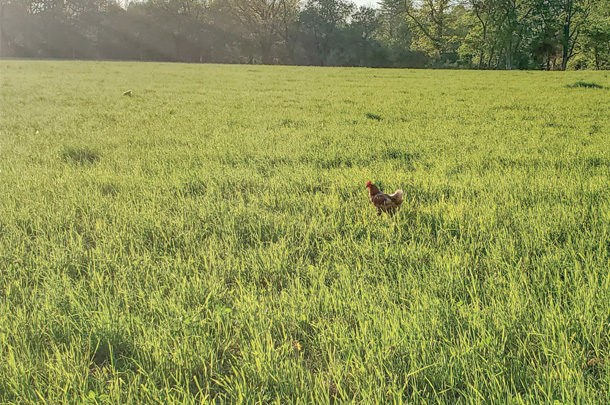What are barber’s pole worms? In 1803, a naturalist by the name of Karl Rudolphi penned the scientific name for the parasitic barber’s pole worm, Haemonchus contortus.
Barber’s pole worms belong to a large family of microscopic nematodes called roundworms. Barber’s pole worms are just one of 750 genera of nematodes that are parasitic to vertebrate animals. They are especially problematic for ruminant animals like goats and sheep. Unlike earthworms, which live their entire life in the soil biosphere, Haemonchus contortus in their adult phase are stomach parasites of higher animals and not visible to the naked eye without an autopsy or microscope.
What do barber’s pole worms look like? Barber’s pole worms’ bodies are not “flat” like another group of nematodes known as flatworms. Their round appearance is due to their having a complete digestive tract and a pseudocoelom, which is a fluid-filled cavity around their digestive system. While adult nematodes look like a squiggly worm at first glance, adult nematodes have multiple lips – while an earthworm, for example, only has one. Both males and females have a spearlike tooth on their head used to continuously suck blood from the host animal’s stomach lining.
How do barber’s pole worm infections develop? Eggs laid by females inside the animal are expelled in the feces, where they wait until conditions are right to hatch, generally around 50ºF. The larva go through three stages of development before crawling up blades of grass so they can be ingested by grazing animals. Once inside the stomach of the animal, the adults use their teeth to hold onto the stomach lining of the abomasum while they siphon off blood.
How do they injure the animal? A high population of barber’s pole worms actively feeding on blood in the abomasum leads to a condition called anemia. The host animal cannot produce enough red blood cells as a result. Heavily infested animals are often lethargic and have diarrhea. Weak newborns may be a sign an infected dam is not producing enough milk at parturition. A heavily infested animal could shed hundreds of thousands of eggs in just 1 pound of feces. If multiple animals are infested, a paddock containing 5 pounds of fresh manure could easily yield over 1 million eggs per day.
Benzimidazoles, imidazothiazoles, tetrahydopyrimidines, macrocyclic lactones, amino-acetonitrile derivatives, spiroindoles and cyclooctadepsipeptides. Prior to the 1960s, farmers relied on carbon tetrachloride, copper sulfate and nicotine drenches to kill intestinal worms and by culling heavily infested animals. In the ’60s, a group of highly efficacious drugs called anthelmintics were discovered. For the next 10 years, producers had a novel new mode of action to combat parasitic stomach worms. When anthelmintics are given to the host animal, the drug is quickly metabolized and circulated in the bloodstream, where it is taken up by the blood-sucking parasitic worm.
How resistance develops. In highly susceptible parasites, anthelmintic drugs bind to the nerves and muscle cells of the nematode, causing paralysis and eventually death. Or, at the very least, forces the nematode to let go of its death grip on the stomach lining, causing it to be expelled in the feces. But when some of the nematodes survive the drug’s effect and are able to reproduce, they encode drug resistance in the next generation. We have come to understand the practice of dosing all the animals in a flock increased the likelihood only resistant eggs were surviving in the refugia (where the eggs are deposited). Because barber’s pole worms have two stages of development, inside and outside the host animal, the time it takes for resistance to a particular anthelmintic varies. But because of their high fecundity in egg laying, on average it takes less than 10 years for drug resistance to develop each time a new mode of action is widely adopted if management practices are selecting for resistance.
Climate change compounding resistance management. Over the course of 30 years, Australia has seen the barber’s pole worm shift from having an overwintering larval stage to completing its life cycle as soon as ingested, making past management strategies that counted on this overwintering larval stage obsolete. Scientists have also learned the parasite can go into an arrested stage of development in the gut when populations get too high, only to become active again when least anticipated.
How do my animals get infected? The eggs of barber’s pole worms are expelled from the host animal in manure pellets. These pellets are like cocoons for the larvae. A dry hard pellet will protect the egg for months. When the pellet breaks apart or softens from moisture, the larva is expelled onto the soil and must find a host animal within 180 days if it’s cold out – or just a few weeks if it’s hot out – before it runs out of energy. Remember, the larva has no other way to feed but by ingesting blood. Since they do not have legs, the larvae hitch rides inside water droplets and jiggle their way up onto the blades of grass, where they anticipate encountering the munching mouth of a grazing animal.
How do I detect infestation in my animals? As described in the paper “Ovine haemonchosis: a review,” in the Journal of Tropical Animal Health, Nov. 2020 issue, animals suffering from barber’s pole worm infestations will exhibit a range of symptoms diagnostic of haemonchosis. In a hyperacute case, sudden death occurs. In acute cases, animals exhibit severe anemia, are lethargic, weak and have increased respiratory and heart rates. Acutely infected animals have dark oozing manure and most likely unexplained loss of wool, abnormal eyelid color and swelling in the jaw similar to bottle jaw. Chronic cases may start out with unexplained weight loss, unthrifty appearance and a change in eyelid coloring. Upon examination, adult animals may have very pale mucous membranes around the eyelid and gum.
Five methods to detecting barber’s pole worms. FAMACHA scoring is a relatively new method of detecting barber’s pole infestation by examining the color of the eyelid and gum mucous membranes and comparing the color to a chart to help producers identify signs of anemia. Other standard methods include identification of eggs from a fecal sample with the aid of a microscope slide well called a modified McMaster Square and then conducting a fecal egg count often referred to as FERC. A microscope is also used to identify the adult worms. Veterinarians can also detect worms using blood work and by necropsies of the stomach lining.
Current strategies for limited acreage. Current strategies include a combination of monitoring (scoring eye color for signs of anemia), testing (fecal egg counts), stocking density and a modified pasture rotation before and immediately after deworming (refugia isolation). The first step can be done when off-farm animals are brought onto the farm for the first time. If eye color indicates possible infection, move onto the second step of conducting fecal egg counts. Animals with high numbers of fecal eggs (300-plus eggs as compared to low 50s or fewer eggs) should not be integrated into the herd. Animals with moderate infection should be dewormed and kept isolated until post-fecal egg counts can be conducted to ensure worms were susceptible to the drug’s mode of action.
Limited-acreage producers can minimize flock intestinal worm pressures by following a weekly rotational grazing schedule and maintaining a minimum sward height, breeding a retaining resistant stock and implementing the seasonal management strategies most likely to slow down dewormer resistance.
 Barber’s pole worms have evolved to know when individual ewes and does are set to lamb. Photo by Melissa Bravo.
Barber’s pole worms have evolved to know when individual ewes and does are set to lamb. Photo by Melissa Bravo.
Barber’s pole worms in general go into an arrested stage of development during the winter months but have evolved to know when individual ewes are set to lamb. Prior to lambing, check some of the ewes to see if the worms are shedding any eggs yet. Start your egg hatch monitoring program when daytime temperatures in your paddock reach the low 50s (Fahrenheit) and precipitation is occurring. By the time temperatures reach the 80s, eggs can hatch in as little as six days.
Managing stocking density to have enough rest paddocks to get through the rotational grazing season is critical if you are dealing with a barber’s pole infestation in your herd. If a heavy infestation is already evident, culling may be your only option to prevent the entire pasture system from becoming infected.
Steps to maintain deworming susceptibility in limited-acreage settings
1. Start the grazing season off with a paddock that rested six months (ideally) or at least three months since the last heat wave. In general, on small-acreage landholdings, 10 ewes or does and their offspring per acre is a sustainable stocking density if you can commit to rotating paddocks every few days (mimic lawnmowing schedule) and the paddocks are grass-bearing (not bare of vegetation).
2. Continue monitoring herd every few weeks with the FAMACHA method. Separate out animals that show signs of heavy infestation and deworm with a different wormer. Again, isolate and test wormed animals for efficacy of the wormer before returning to the herd.
3. To slow down deworming resistance, don’t worm animals not showing signs of high infestation loads (diarrhea, poor body condition, dull hair coat or abnormal fleece). Remember, the healthiest animal may have resistance to the worms, and their offspring will improve the herd’s immunity over time. Tag these lambs so you remember this trait at weaning time.
4. High ambient temperatures will kill eggs and larvae. When it’s over 100ºF out, mow the rest paddock areas short and rake over the barnyard area to dry fecal pellets.









